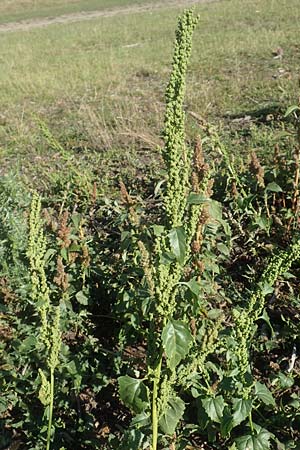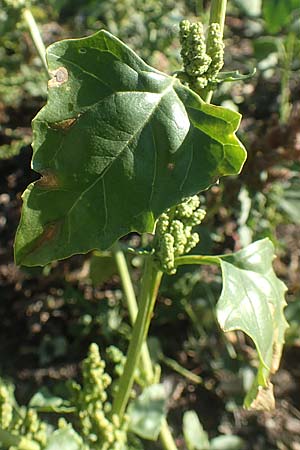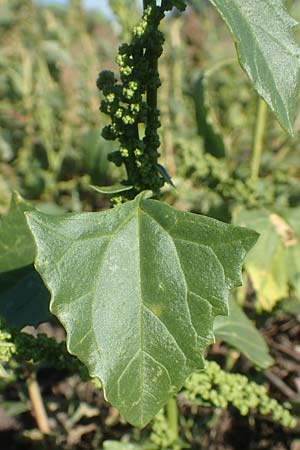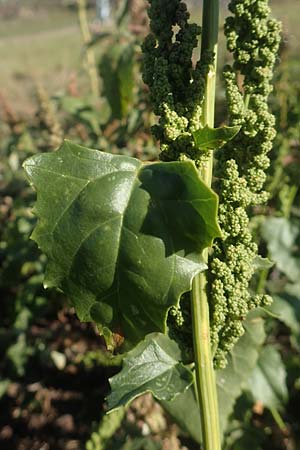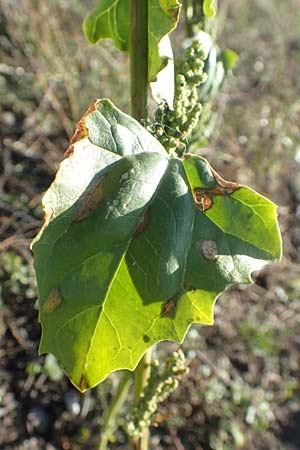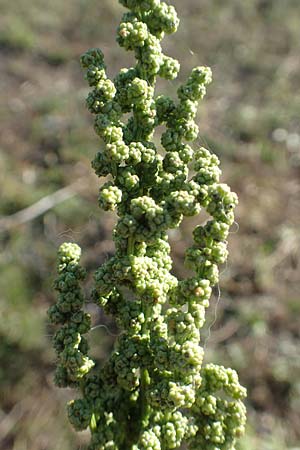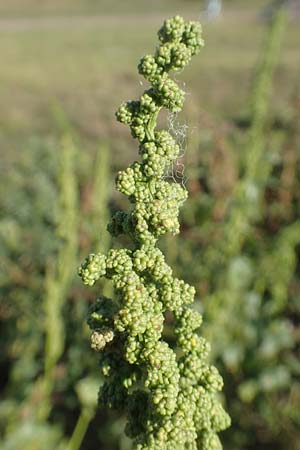The City Goosefoot Chenopodium urbicum is a plant of Eastern European origin that not rarely used to occur in Central Europe, too,
for example there is a herbarium specimen from Mannheim (Germany) from 1903. Today the plant in Germany can only be found
at a few locations near Bad Windsheim and Bamberg. The location of the shown population is a bald spot on a sheep pasture near Bad Windsheim,
where brushwood had been stored for years, the most common accompanying plant is Amaranthus retroflexus.
The closest relative of Chenopodium urbicum is Chenopodium rhombifolium WILLD., a plant of Western European origin,
which partly used to be confused with Chenopodium urbicum, partly it was separated from it as Chenopodium urbicum var. intermedium or Chenopodium intermedium.
In Germany Chenopodium rhombifolium has some locations in the Upper Rhine Valley.
Dr. Rolf Wisskirchen has studied the genus Chenopodium for years and published about it.
Among other things, he also described the differences between Chenopodium urbicum and Chenopodium rhombifolium:
the latter has a distinctly wedge-shaped leaf base and deep teeth on the edge of the leaves, it carries its seed-bearing branches
at an acute angle from the stem, while the leaf base of Chenopodium urbicum is trimmed, the leaf has a rather shallow serration,
and the seed-bearing branches are parallel to the stem.
|




